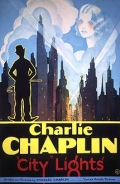
The Kite Runner is a kind of coming of age (and then some) story by Afghan-cum-American author Khaled Hosseini. It tells the life’s story of Amir, a native of Afghanistan’s capital city of Kabul. The novel starts with Amir’s childhood, predating much of the country’s civil and international strife with which more modern readers may be familiar. It was actually a pretty nice childhood, most of which Amir spent with another boy named Hassan, who despite being from a lower caste and being the son of Amir’s household servant, is a good friend.
Things fall apart, though, after Hassan experiences a brutal attack that Amir might have been able to stop if he had been more brave and able to reciprocate half the loyalty Hassan has for him. This failure and the crushing guilt that comes with it haunt Amir and changes not only his relationship with Hassan but his entire life. To say more would spoil things a bit, but suffice to say that along with exploring some severe daddy issues, the rest of the book is spent seeing Amir’s life go around the globe and coming full circle to redress his wrongdoings.
I enjoyed The Kite Runner well enough, and Housseini is a competent author with a good sense of pacing. It’s very readable and things zip along quickly enough outside of a few bits where there’s too much tromping around Northern Californian flea markets. And Amir is certainly a complex character who swings through a number of development arcs. Most of the book’s energy comes from exploring his nature and seeing him pursue dreams and wrestle with the guilt that he can only bury, not shed. And there’s some interesting stuff going on with his relationships –with his dad, with Hassan, and with others.
I also enjoyed learning about Afghanistan, its culture, history, and people. It was a new setting for me, and one that the author did a pretty good job of describing. One complaint that I have in this area, though, is that Housseini went WAY overboard with injecting phrases from the Afghani language into the narrative. I can see why he does this: it adds color and authenticity. And it’s fine when referring to nicknames, cuisine, places, or anything else idiosyncratic to the culture. But when he injects Afghani words for common words like “souveneir” or “street” then it just gets distracting kludgy. It actually reminded me in that way of how bad fantasy novels will lamely inject phrases from dwarven or elven or whatever made-up language in an attempt at local color. What’s worse is that Houssini doesn’t really need to do this; he paints the culture vividly enough with other brushes so that he didn’t have to over rely on this old trope.
Still, The Kite Runner is on balance pretty entertaining and different enough from stuff I normally read to be interesting.












































